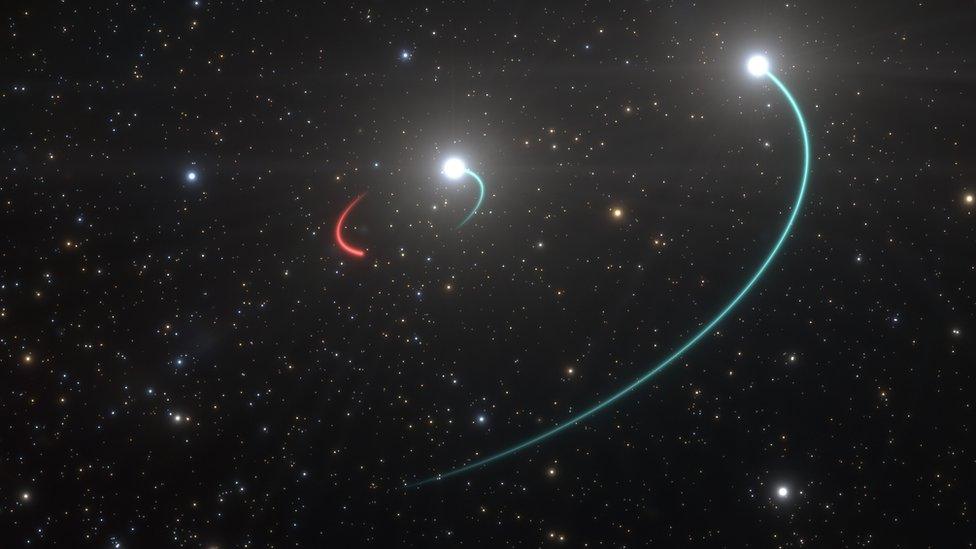Closest black hole to Earth discovered
- Published
- comments

The newly discovered black hole is thought to be 1000 light-years away from Earth
A team of astronomers have discovered what is thought to be the closest black hole to Earth.
The space phenomenon revealed by experts at the European Southern Observatory (ESO) is just 1000 light-years from our planet.
That might sound very far away, but the closest black hole found until now, known as V616 Monocerotis or A0620-00, is about 3,500 light-years away.
What is a black hole?
Black holes are pretty epic. They're formed when a dying star collapses inward under the pressure of its own weight. This leads to something called a supernova, a star's extremely powerful explosion.
Black holes are places in space where the pull of gravity is so strong that even light can't escape it! This is what makes them invisible.
Not only is the newly found black hole nearer to our solar system then any other discovered, but it also forms part of something known as a triple star system which can actually be seen with the naked eye from Earth.
A triple system describes three stars, or in this instance two stars and a black hole, which orbit one another in space.
The triple system, which consists of two stars, can be seen clearly from Earth with binoculars or a telescope
"We were totally surprised when we realised that this is the first stellar system with a black hole that can be seen with the unaided eye," said Petr Hadrava, Emeritus Scientist at the Academy of Sciences of the Czech Republic in Prague.
The triple system is believed to be so close to the Earth that its stars can be seen from the southern hemisphere on a dark, clear night without the need for binoculars or a telescope.
Black holes are actually invisible and the one if this instance is thought to have a mass four times that of the Sun. Its existence was identified because of its gravitational pull, forcing the inner star in its system into orbit. This inner star is thought to orbit the black hole every 40 days.
The MPG/ESO 2.2-metre telescope is located at the ESO's La Silla Observatory in Chile
The team were able to find the invisible space object by tracking its two accompanying stars using the MPG/ESO 2.2-metre telescope at the ESO's La Silla Observatory in Chile. They believe that many more black holes may be found in future years.
"There must be hundreds of millions of black holes out there, but we know about only very few. Knowing what to look for should put us in a better position to find them," said ESO scientist Thomas Rivinius.
- Published22 November 2019
- Published1 June 2020
- Published14 April 2019
